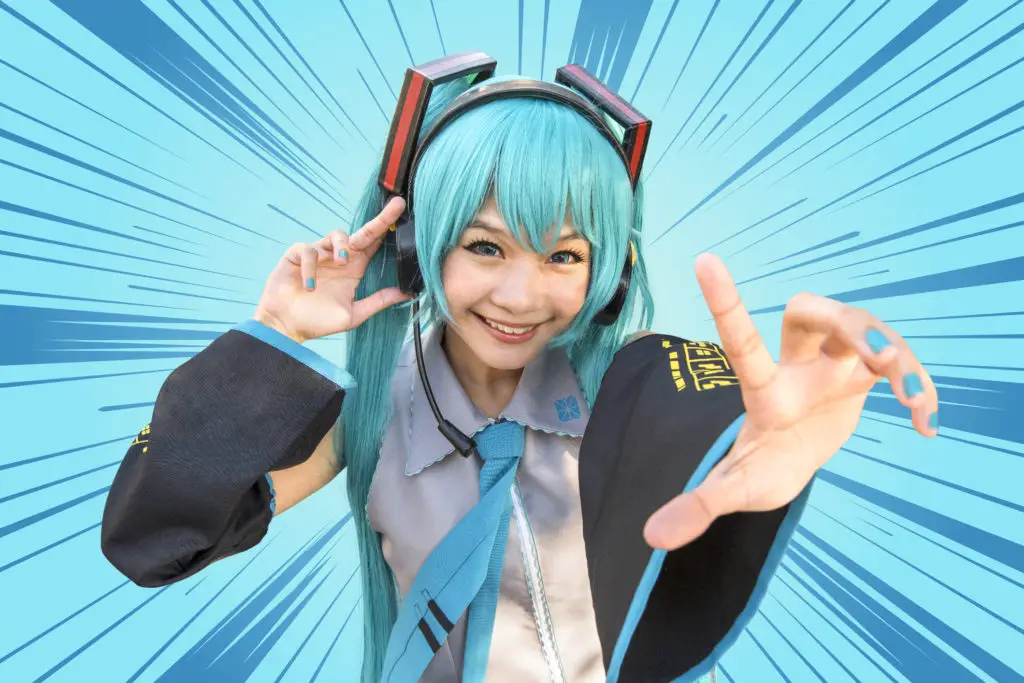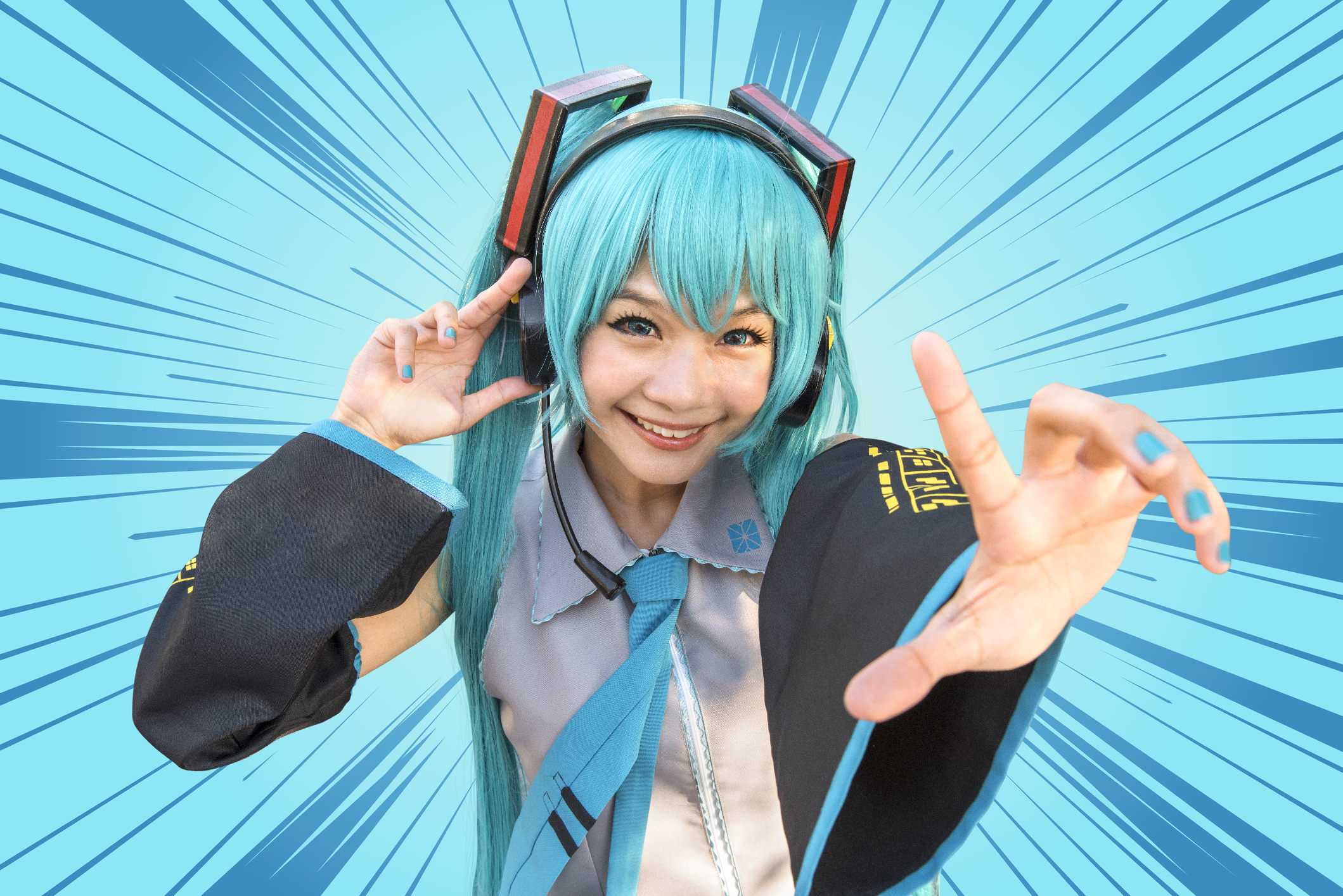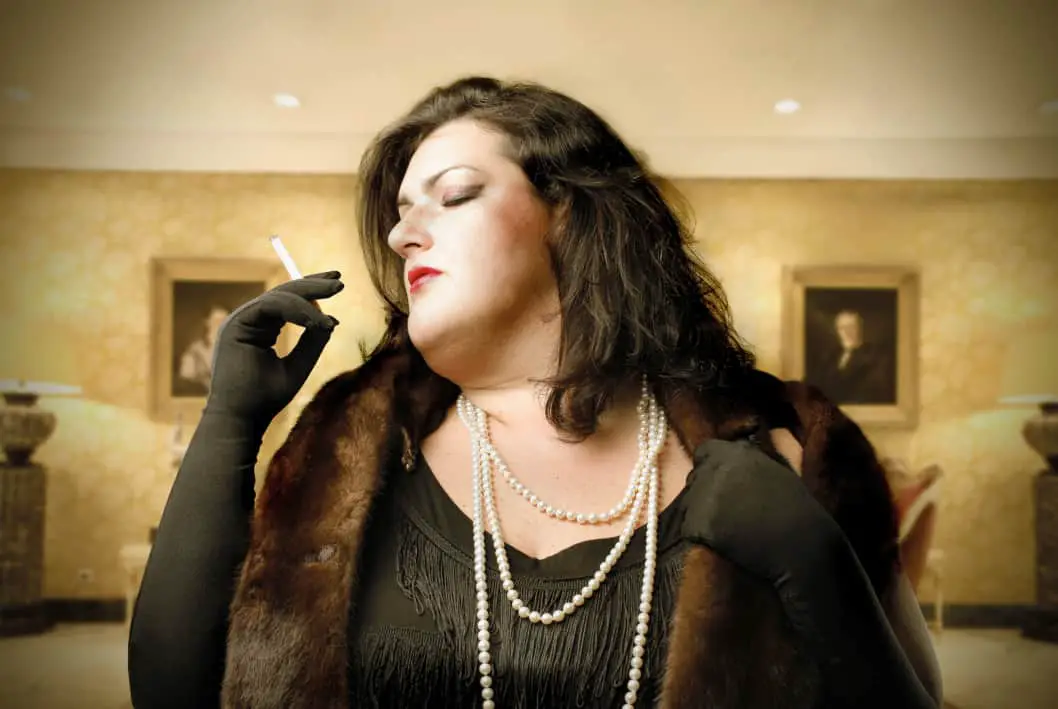We’re getting closer to understanding what makes something cute. The human brain is wildly complex, and how it interprets inputs is of constant fascination. In terms of some artwork, we somehow instinctively judge that it’s a cute art style, but what causes that reaction?
Cute art styles generally follow the infant schema through visual proportions, colors, or emotional situations. The brain’s pleasure center produces a chemical reward, triggering a feeling of caring and nurturing. Introducing one or more cuteness elements into art invokes an innate response.
The art style of anime demonstrates and causes many of these responses in viewers. The way the characters are drawn appears childlike or younger than their age. Popularized styles like Kawaii and Chibi, the anime movement brought a cuteness factor into mainstream art forms. First, let’s dig into the biological secrets of cuteness.

What makes something cute?
Generally, humans find something cute when a part of the brain called the nucleus accumbens (NAc) is triggered, releasing dopamine and causing loving, caring, and nurturing feelings. This primal function exists to help ensure the continuation of the species but also invokes enjoyment.
When you are in love, dopamine is released in large quantities. When you see something cute like a baby or a cute picture, dopamine is released in smaller amounts but still gives you that good feeling.
Cuteness can trigger in varied species such as dogs and cats. In fact, certain breeds of canines have been propagated to retain cuteness and baby-like qualities into adulthood. This retention of juvenile features in an adult animal is called neoteny.
Why is Cuteness Important?
Cuteness is important in the natural world to promote the nurturing of young animals by their parents or members of the same familial unit or community. In addition, for humans, cuteness also provides emotional balance and enjoyment.
When you see a human infant, puppy, kitten, etc., your nurturing response is triggered. This response is why parents will care for their children. Other species are also thought to have similar reactions to their own offspring and orphan intraspecies and interspecies caring instinct.
Humans tend to find something cute for much of their lives. At the same time, other animals typically do so only during the early stages of parenting their brood. For example, Animal Planet reported on this mother cat who raised ducklings that happened to share many of the same traits as her own litter.
In 1949, Konrad Lorenz contended that puerile or youthful features trigger fostering outcomes in adults. Anthropologists have incorporated Lorenz’s findings into their work and understanding of the human psyche.
Pop culture has also taken these results and incorporated the concepts into art.
How to Make Art Cute?
To make art cute, adjust facial features and body proportions, use round shapes, soft textures, and warm colors. A character can also convey cuteness through overstated reactions to innocence, common situations. The artwork becomes cute by tapping into innate human nurturing instinct.
Adjust the Proportions
The most important part of the adjustment is to retain the baby schema; even for ostensibly older subjects or characters, we need to maintain neoteny. This portrayal will trigger the NAc in the brain and produce the desire to care for the subject.
The best way to accomplish the adjustment is to enlarge the head and make the body small. With a larger head, you have a larger canvas for the facial features.
Adjust the eye size, which is noticeable in the Disney princesses over time. In the beginning, the artist drew them made to scale of an adult. Over time their heads have gotten bigger, with more enormous eyes, and their bodies smaller like a four-year-old child.
The mouth has been enlarged, and the nose has gotten progressively smaller or non-existent. These figures have no sharp corners.
Choose the Right Colors and Textures
Color also helps convey cuteness. Warm, soft pastel colors representative of an infant can hint at a sense of cuteness. The use of bright colors may also have a gradient going from light to dark, and sometimes patterned and sometimes flat.
Set An Emotional Scene
The artwork’s scene can also add to the piece’s cuteness giving the subject a trigger to show activity or express emotion.
Characters in cute artwork usually express comically large emotions in everyday life, allowing the viewer to see the subject as a parent would see their child. Artists will emphasize facial reactions representing a range of emotions:
- Oblivious
- Shy
- Generous
- Innocent
- Unassuming
- Gullible
- Sensitive
When characters experience these emotions in an overly dramatic way, the audience becomes devoted to the subject.
If Possible:
Depending on your art medium, sounds can amplify cuteness, like a baby cooing or a kitten meowing. Even certain scents like baby products can add a layer of cuteness.

Cute Art Styles
Anime
Anime is an artistic style of Japanese art, although the word is derived from the English word animation. The earliest commercial Japanese animations were produced around 1920. The style became popular 40 years later through the works of Osamu Tezuka.
Anime is used across genres such as comic books and movies, and they encompass:
- Comedy
- Drama
- Sci-fi
- Action-adventure
- Horror
This form of animation is for both children and adults, depending on the topic.
Kawaii
The kawaii artistic style is a newer style of anime. The colors in this type of anime are usually bright and vivid. Kawaii tends to portray their characters in a bit more unrealistic terms in relation to their ages. Giant eyes and simple features refer to the typical description of the Kawaii character.
The word kawaii is derived from the Japanese word for cute. The style is graphic and bold, with characters usually featuring:
- An oval drawn for one eye
- A cute winking eye
- Adorable Smile
- Rosy Cheeks
- Eyes Sparkling
The entire concept of Kawaii comes from the 1970s rebellion against traditional Japanese culture. Young women started to dress in more “adorable” fashions.
Japanese girls were trying to set themselves apart from the roles they were supposed to play in society. This sense of rebellion made its way into visual arts, performing arts, music, and fashion in the 1980s.
Cuteness had the stigma of being feminine. Young women began imitating the kawaii style calling it burikko, meaning “woman who acts like a child.” This style incorporates:
- Frilly Dresses
- Bows
- Stockings
- Pastels
- Colorful Hair
- Numerous Accessories
- Bedazzled Items
Chibi
Chibi is an art style that can be described as childish, as the anime characters look much younger than they are. All the shows that feature Chibi art styles have a childlike theme.
In Japanese, the word chibi refers to a small person or child.
The major features of these characters include greatly embellished childlike proportions, with their heads sometimes being four times larger than their bodies. The characters can also be short and chubby.
This artistic style is often utilized in anime to accentuate mood changes or express interest in a joke’s punchline. Certain aspects of the drawing are exaggerated, while others are simplified. Chibi exaggerates the head size and eye size the most.
The 1990’s anime and manga “Sailor Moon” first brought attention to these unusual characters. In the anime, there was a popular character named Chibiusa, who displayed chibi characteristics. The pet name was given to the daughter of Sailor Moon.
The characters in Sailor Moon typically had chibi hairstyles and enlarged outfits. At the same time, their faces were more fundamental in shape and expression.
Chibi was introduced in the franchise “SD Gunman,” a series of illustrations that portrayed various Gundam mechas with a disproportionately oversized heads. A junior high school student drew the earliest discovered sketch of an SD Gundam.
Another example of an anime show in the chibi style is Kinmoza. It centers around the story of a 15 -year old Japanese schoolgirl who did a homestay in the UK when she was younger.
Chibi characters help to create cute and fun anime and manga.
If you’ve identified this popular style as one of your favorite art styles, trying your hand at creating this type of character, Art Rocket has an excellent beginner’s guide to drawing in the Chibi style.




